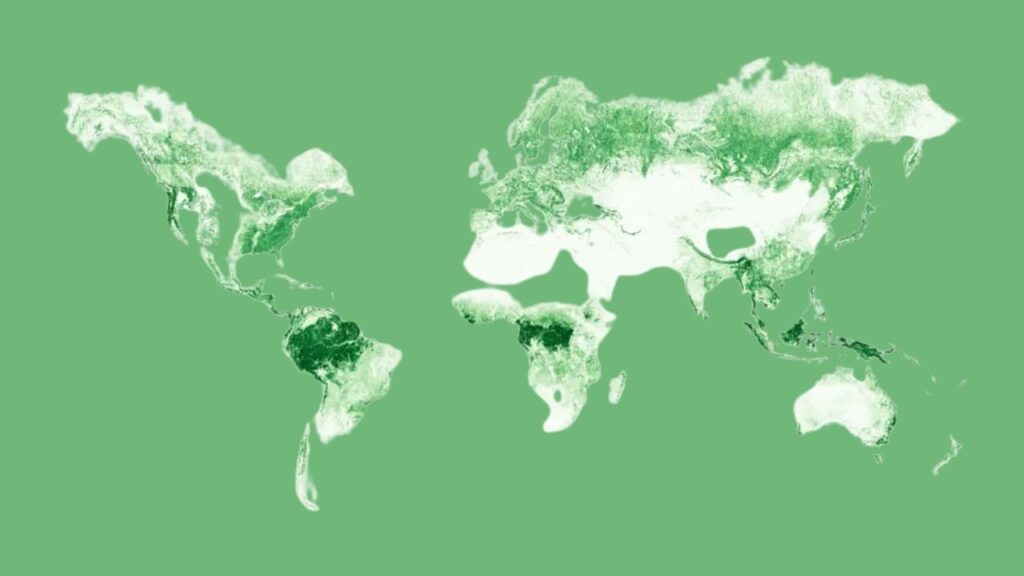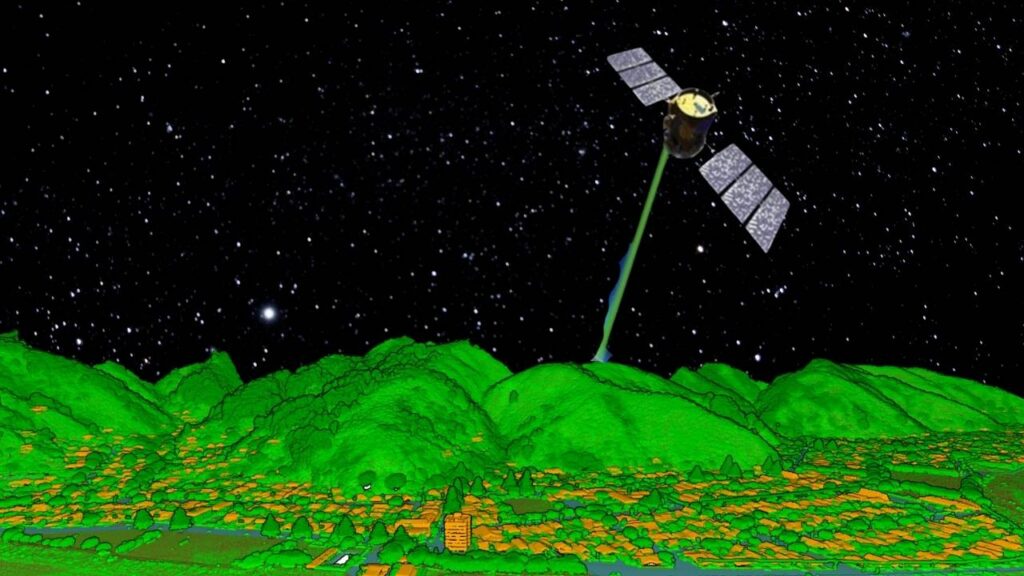Satellite LiDAR and AI Enable Rapid Forest Carbon Mapping: Ever wondered how we can keep tabs on the world’s forests and the carbon they store, all from way up in space? Well, get ready, because satellite LiDAR and AI are changing the game for rapid forest carbon mapping. This isn’t just high-tech talk—it’s a real breakthrough that’s helping us fight climate change, manage our forests smarter, and keep our planet healthy for generations to come.

Let’s break it down in a way that’s easy to follow, with a dash of Native American storytelling spirit—because, just like our ancestors, we know the land, the trees, and the stories they hold matter to us all.
Satellite LiDAR and AI Enable Rapid Forest Carbon Mapping
| Feature | Details |
|---|---|
| Technology Used | Satellite LiDAR (Light Detection and Ranging) + Artificial Intelligence (AI) |
| Speed | Maps forests in minutes, not weeks |
| Accuracy | High—can measure individual trees and estimate carbon stocks with precision |
| Coverage | Global—reaches even the most remote forests |
| Professional Impact | Essential for climate scientists, foresters, policy makers, and carbon market professionals |
| Official Resource | NASA GEDI Mission |
Satellite LiDAR and AI have truly enabled a rapid forest carbon mapping breakthrough. This technology brings together the wisdom of the land, the power of science, and the speed of modern computing to help us protect our forests and fight climate change. Whether you’re a student, a scientist, a tribal leader, or just someone who loves the outdoors, these tools are here for you—ready to help you make a difference.
What’s the Big Deal? Context for the Carbon Mapping Revolution
Picture this: For centuries, Native American storytellers have passed down knowledge about the land, the trees, and the cycles of nature. Today, scientists are using a new kind of storytelling—one that uses lasers and artificial intelligence to “read” the forests from space.
Satellite LiDAR works by shooting laser pulses from satellites down to Earth. When these pulses bounce back, they tell us how tall the trees are, how thick the forest is, and even how much carbon is stored in those trees. Add AI to the mix, and suddenly, we can crunch all that data in a flash, making maps that used to take months in just a few minutes.
Why does this matter? Because forests are the planet’s lungs. They soak up carbon dioxide, help cool the Earth, and are home to countless species. Knowing exactly how much carbon is stored helps us tackle climate change, protect wildlife, and make smart decisions about our land.
How Does Satellite LiDAR and AI Work? A Step-by-Step Guide
1. LiDAR in Space: The Eyes Above
- Satellites like NASA’s GEDI and ESA’s Biomass mission carry LiDAR sensors that shoot laser beams at Earth.

- The lasers bounce off the treetops, the ground, and everything in between.
- By measuring how long it takes for the light to return, we get a 3D picture of the forest—even in places no one’s ever set foot.
2. AI: The Brain Behind the Operation
- All that LiDAR data is massive—think millions of points per second.
- AI algorithms, trained on thousands of ground measurements, analyze the data to figure out tree height, density, and biomass.
- The result? Accurate maps showing how much carbon is stored in every patch of forest.
3. Data Fusion: Bringing It All Together
- Scientists combine LiDAR with satellite photos, radar, and even drone images.
- This fusion gives us the clearest, most detailed view of forests ever—down to individual trees in some cases.
4. Rapid Mapping: From Months to Minutes
- Thanks to AI, what used to take teams of experts weeks or months now happens in minutes.
- These maps are updated regularly, so we always have the latest info—no more waiting for outdated reports.
Why Is This a Breakthrough? Real-World Impact
For Climate Warriors
- Accurate carbon maps help countries track their progress on climate goals, like those in the Paris Agreement.
- Forest carbon credits can be verified quickly, making the carbon market more trustworthy.
For Forest Managers and Tribes
- Native American nations and local communities can use these tools to manage their lands, protect sacred groves, and plan for the future.
- Real-time data means faster response to threats like wildfires or illegal logging.
For Scientists and Policy Makers
- Detailed maps help spot trends—where forests are growing, shrinking, or changing.
- This guides smart policy, funding, and conservation efforts.
For Everyone
- Healthy forests mean cleaner air, more wildlife, and a safer climate for our kids and grandkids.
Practical Advice: How to Use This Tech
If you’re a land manager, scientist, or even a student, here’s how you can tap into the power of satellite LiDAR and AI:
- Check Out Official Tools: Start with NASA’s GEDI Mission for open data and resources.
- Use Free Platforms: Many universities and agencies offer free access to forest carbon maps.
- Get Training: Online courses in remote sensing and AI are widely available—no need to be a rocket scientist!
- Partner Up: Work with local tribes, conservation groups, and tech experts to apply these tools to your land or research.
Real-Life Example: The Forest Carbon Monitoring Tool
Let’s say you’re a forester in Oregon, or maybe a tribal land steward in Oklahoma. You want to know how much carbon your forests are storing—and how that’s changing over time.
- Step 1: Log in to a platform like Planet’s Forest Carbon Monitoring tool.
- Step 2: Select your area of interest—zoom in to your reservation, community forest, or state park.
- Step 3: The tool shows a color-coded map of carbon stocks, updated every few months.
- Step 4: Download reports, share with your team, and make decisions—like where to plant more trees or focus fire prevention.
This isn’t just for big agencies—anyone with internet can access these maps and start making a difference.
Microsoft Debuts Majorana 1 Processor: Topological Qubits Pave Way for Million-Qubit Quantum Chips
New Breath Sensor Detects Methanol Poisoning Easily and Quickly
FAQs About Satellite LiDAR and AI Enable Rapid Forest Carbon Mapping
What is LiDAR, and why is it better than regular satellite images?
LiDAR uses lasers to measure the height and structure of forests, giving a 3D view. Regular satellite images are flat and can’t measure tree height or biomass as accurately.
How does AI help with carbon mapping?
AI analyzes huge amounts of LiDAR data quickly, spotting patterns and calculating carbon stocks with high accuracy.
Can this tech help stop climate change?
It’s a powerful tool! By knowing exactly where carbon is stored and lost, we can protect forests and make smarter climate policies.
Is this technology available to the public?
Yes! Many tools and datasets are free and open to everyone, including tribal nations, scientists, and students.
How accurate are these carbon maps?
Very accurate—often within 10% of ground measurements, thanks to AI and constant validation.
Do Native American communities use these tools?
Absolutely. Many tribes are using satellite data and AI to manage their lands, protect resources, and advocate for environmental justice.
The Native American Connection: Storytelling, Land, and Technology
Just like the old stories our elders told around the fire, today’s carbon maps tell the story of our forests—where they’re thriving, where they’re hurting, and how we can help. Native American literature and oral traditions have always emphasized the deep connection between people and the land. Now, with satellite LiDAR and AI, we’re adding a new chapter to that story—one that blends ancient wisdom with cutting-edge tech.






